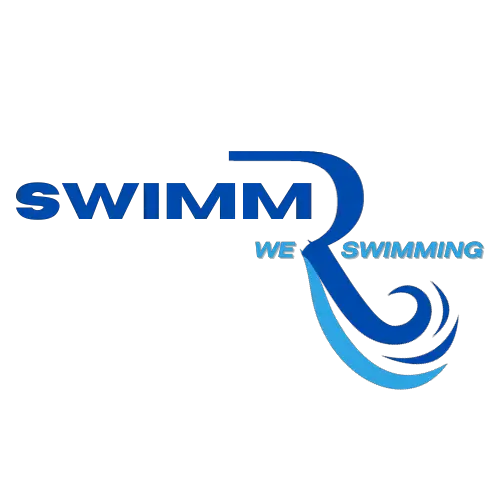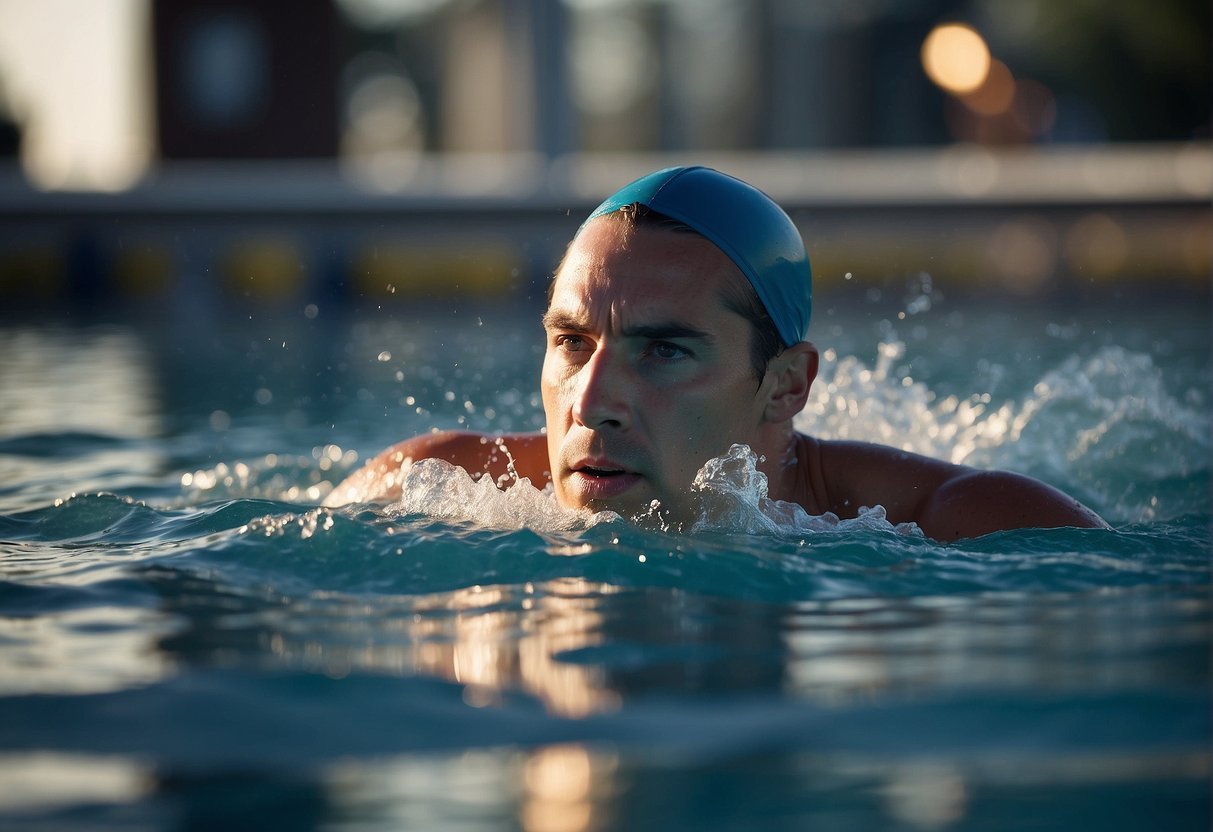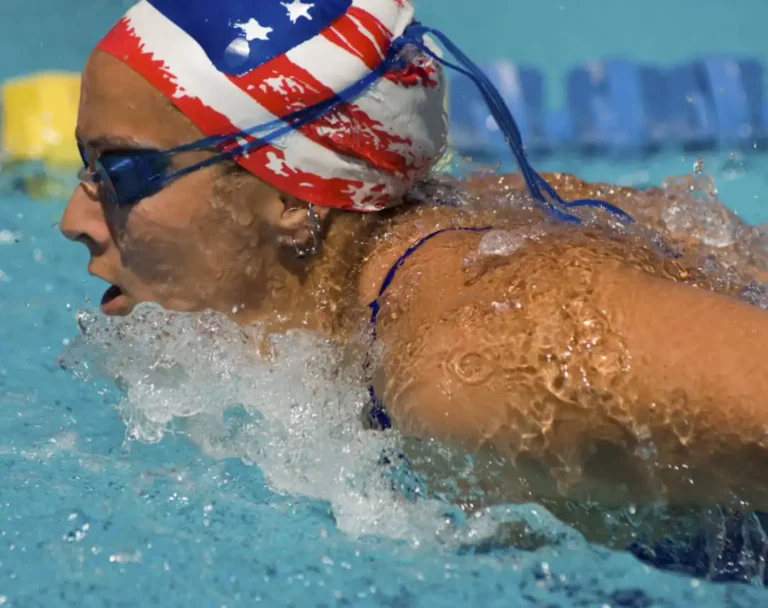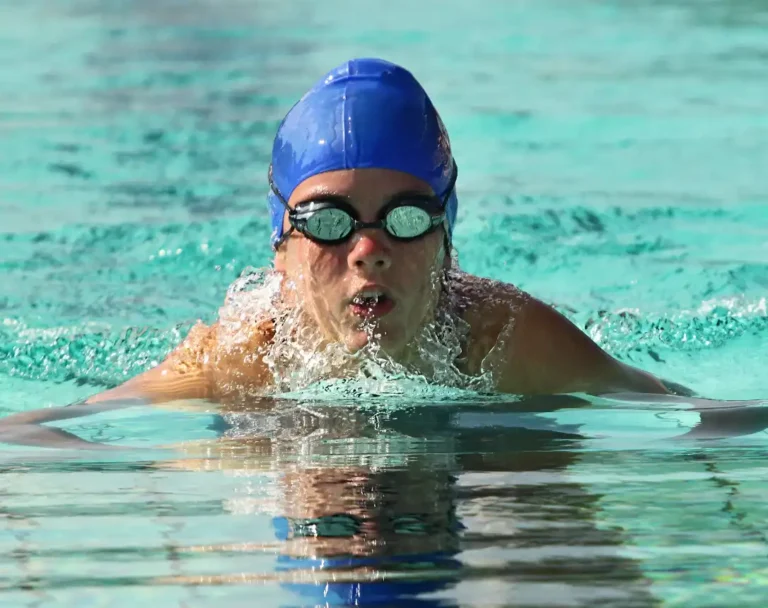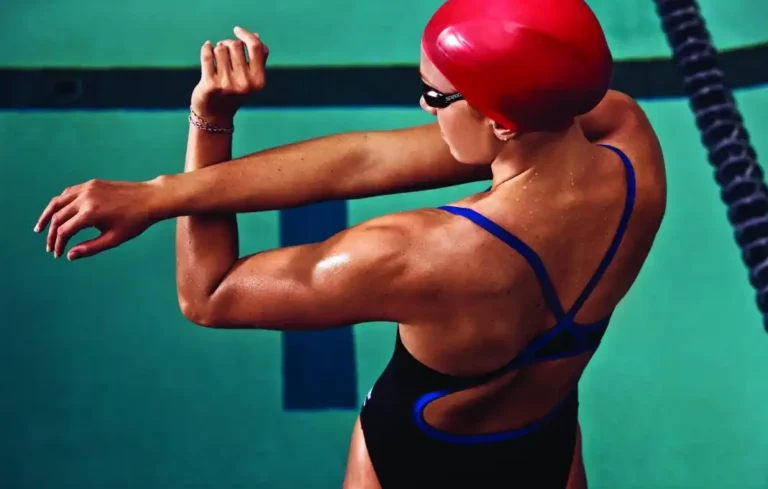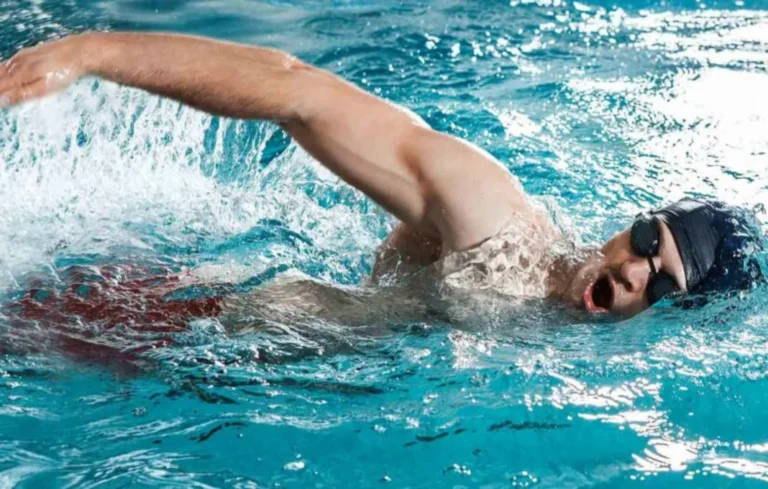Enhance your freestyle technique and breathe new life into your laps with “How to Breathe While Swimming Freestyle? 7 Easy Tricks,” your go-to resource for mastering the art of aquatic respiration.
How to Breathe While Swimming Freestyle? Fundamentals
Body Position: Keep your body as flat as you can on the water. You’re aiming for a streamlined form with minimal resistance. Imagine your body is a boat slicing through the waves; your hips are high, and your head is an extension of your spine, looking slightly down.
Kick: Your legs are your engine! A consistent flutter kick, originating from the hips with just a slight bend at the knee, keeps your body balanced and aids forward momentum. Your feet should create small splashes—think of them as your rhythm section keeping the tempo.
Pull: Every stroke is a powerful motion starting from the extension in front of you, down to your hip. Remember, it’s not just your arms doing the work—it’s a symphony of muscles. Engage your back, shoulders, and core to get the most out of every pull.
Breathing: Inhale quickly to the side during the arm recovery and exhale underwater to maintain a constant flow of oxygen. Breathe into the bow wave created by your forward movement; it’s like slipping your mouth into a pocket of air!
| Key Entity | Why It Matters | Your Focus |
|---|---|---|
| Stroke | Fluid motion increases efficiency. | Smooth, alternate arm movements. |
| Technique | Correct form equals less effort. | Coordination of breathing, arms, and legs. |
| Body Position | Reduces drag, maximizing speed. | Stay flat, streamline your posture. |
| Kick | Balances and propels you. | Small, strong kicks from the hips. |
| Pull | Main source of propulsion. | Use full body to maximize each stroke. |
| Muscles | Strength ensures power and endurance. | Engage core and back muscles in each stroke. |
| Freestyle | The art of swimming efficiently. | Combine all elements in harmony. |
Breathing Techniques in Freestyle

Mastering the Breathing Rhythm
Your breathing pattern in freestyle is a cycle of inhaling quickly and exhaling slowly. Inhale sharply through your mouth when you turn your head to the side. Throughout the strokes, you should continuously exhale into the water through your nose and mouth to prevent CO2 build-up.
Side Breathing Mechanics
To breathe to the side in freestyle, rotate your head with the body’s natural rolling motion while keeping one goggle submerged. Create a bow wave with your head’s movement to a lower pressure area in the water to breathe in without lifting your head, which helps maintain efficient body position.
Bilateral Breathing Advantages
Bilateral breathing—alternating breaths on both sides—enhances balance, improves symmetry in stroke, and ensures equal development of neck muscles. It also allows you to adapt your breathing pattern to waves or competitors in races and is more efficient for long-distance swimming.
Practice Drills for Perfecting Breath
- Bubbles Drill: While swimming, focus on blowing bubbles to practice your exhale.
- Kickboard Exercise: Hold the kickboard out front, maintaining head position, and practice side breathing with each arm pull.
- Guided Workouts: Use apps like MySwimPro for structured breathing exercises tailored for beginners to advanced athletes.
Common Breathing Errors
Avoid lifting your head too high out of the water, which disrupts body position. Don’t hold your breath; consistent exhalation is necessary to sustain effort and avoid CO2 build-up. Over-rotating your head can tense your neck muscles and lead to inefficient swimming.
Breathing Strategies for Different Paces
For sprinters, a minimal breathing technique with fewer breaths to reduce drag is key. Distance swimmers require a consistent and relaxed pattern to conserve energy. Practice varying breathing patterns in workouts to find what’s suitable for your pace and increases your swim efficiency.
Enhanced Performance Through Breathing

Get Excited About Exercises! Engage in targeted exercises that refine your breathing mechanics. A guided workout aligned with your goals can be a game-changer. MySwimPro app offers personalized plans where you can track progress and drill down on perfecting breath control.
Here’s a quick breathing-focused workout to try:
- Warm-up (300m): Take it slow, focus on form.
- Breathing drills (4 x 50m): Alternate breathing every 3/5/7 strokes.
- Pull sets (5 x 100m with pull buoy): Breathe every 3 strokes, stay streamlined.
| Effort Level | Activity | Reps |
|---|---|---|
| Medium | Freestyle with focused breathing | 8 x 50m |
| High | Freestyle sprints with explosive breaths | 4 x 25m |
| Low | Cooldown (easy swim) | 200m |
For athletes seeking to elevate their workout routine, consistent exercise emphasizing breath control can dramatically enhance performance. Remember to stay relaxed. Tension is the nemesis of efficient breathing. Each breath should be calm, controlled, and timed to the rhythm of your stroke for that polished, effortless glide.
FAQ:
How to breathe when freestyle swimming?
When freestyle swimming, turn your head to the side for a quick breath as one arm pulls through the water, exhaling underwater before the next breath.
How do I stop getting out of breath when swimming?
To stop getting out of breath when swimming, work on your breathing technique, swim at a steady pace, and build your endurance over time.
Do you breathe through your mouth or nose when swimming freestyle?
In freestyle swimming, breathe in quickly through your mouth when turning your head to the side, and exhale through your nose or mouth underwater.
How do you hold your breath when swimming?
Hold your breath when swimming by taking a deep breath through your mouth and keeping your mouth closed, exhaling slowly if needed.
